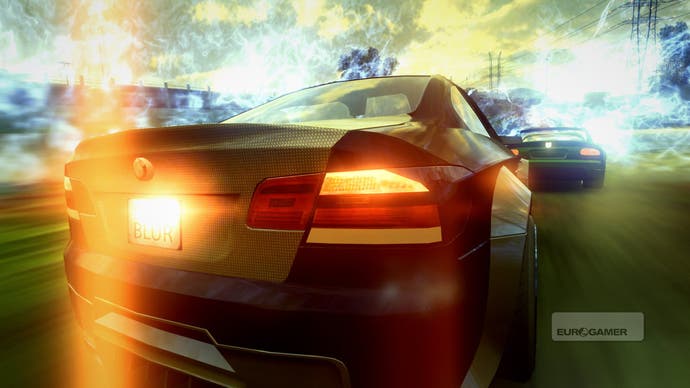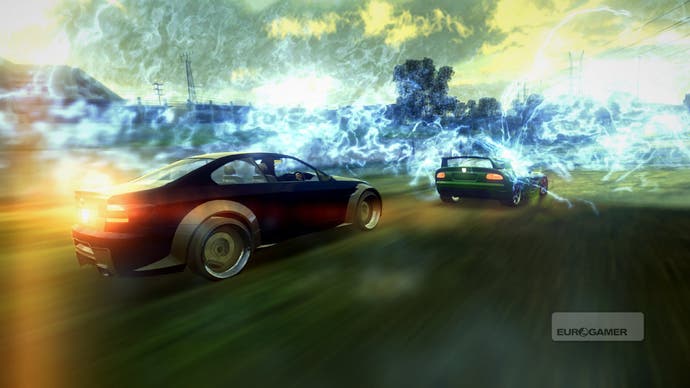Bizarre Creations' Gareth Wilson
On building Blur's new IP in two years.
Throwing off the shackles of simulation racing might sound like a good idea to some extent, but in Bizarre Creations' case, the simmy side of Project Gotham Racing was only shackling it to, er, enormous critical acclaim. Having been swallowed up by Activision, however, the Liverpool-based developer had little choice but to start over on something new - and after a decade making sim-leaning racing games for Dreamcast and then Xbox and Xbox 360, it's little wonder that Blur is such a departure.
You can read about exactly where it departs to in our hands-on preview, but as a little bank holiday bonus, here's the full transcript of our chat with lead designer Gareth Wilson.
Yes, to be totally honest. You know what the biggest problem was, we were coming up with a new IP and we had the entire Gotham team just sat there. I think that was the hardest thing, that we had loads and loads of people, 50-odd artists, waiting to make stuff. S***, what do we do, it would normally take 3 or 4 years to make a new IP and it's only two years. So that was the hardest aspect of it, keeping the dev team busy while we were working out what the hell we were going to do. So lots of stuff that we normally do right at the end we had to do at the start; we had people building lamp-posts, lorries and things like that.
And then from a design perspective, it was difficult to shift from reality to what's good for the game. The team for 10 years had advocated reality and done it really well. So yeah, it was tough but everyone's on board now. But really it was the art team that found it tougher than other sections.

Variety, really. It's gone from precision to variety. We're still taking as much care, maybe even more care in the track design itself, but we're just working much more on the experience, what we want people to feel, what we want them to remember about that track, whereas in Gotham it was more, let's make a great circuit out of this city. Now we're thinking, we want people to go to this desert race and do this track in Nevada because we want them to remember doing cool s*** in 4x4s and driving along on all these different surface types. So the track design is really about memorable moments and emotion.
I'd say we've done maybe three or four times more track design work in this game than on the previous game, because in the previous game everything was locked down. You had a track and you had to make it as good as you could from what you had. Whereas now, because we're not tied down to reality, you can just move stuff out of the way. So in a way, it gives you loads of freedom, but because you don't have those constraints it does make it quite a difficult task. Now, because you can do more stuff, you do more stuff.

Well most of them don't have the physics engine really, do they. Like, Burnout doesn't really have a proper physics engine in the same way. So this is still a proper physics engine. It's a brand new one actually, it's completely multiformat, but it's based on the same stuff we had in PGR. We've things that go over the top in the physics, so we've got this thing which is called anti-flick - if the car starts drifting out, the game applies forces to the car to straighten it out. So some of the cars, the easy cars, if they start losing traction the forces kick in to basically allow less experienced players to drift on corners more easily.
Having said that, if you pick a very drifty car like the Dodge Challenger, then you'll get a pretty much carbon-copy Gotham car. So all we've done is broaden the bookends of Gotham, so like in Gotham the Ariel Atom was quite easy to handle, but if you gave it someone who didn't play racing games they'd smack into every wall, and go this is crap, I'll go and play Halo, thank you. So all we've done is really gone that way with the usability of the vehicles. So if you want a really drifty car, it'll be there for you. We're not dumbing down at all.








